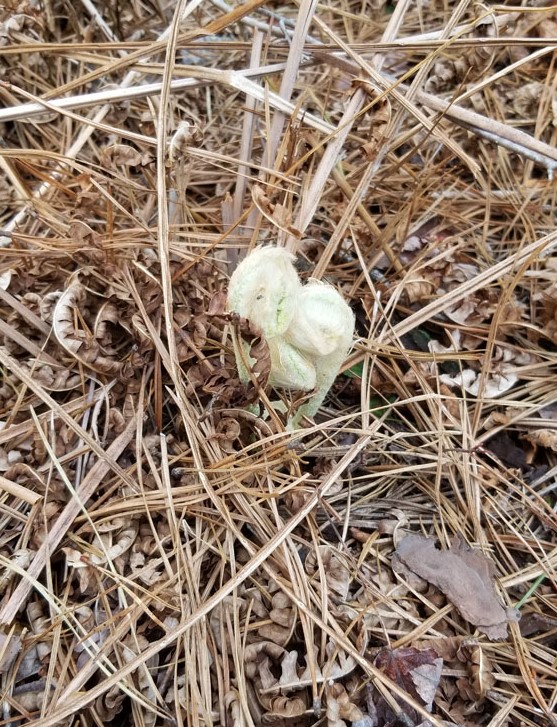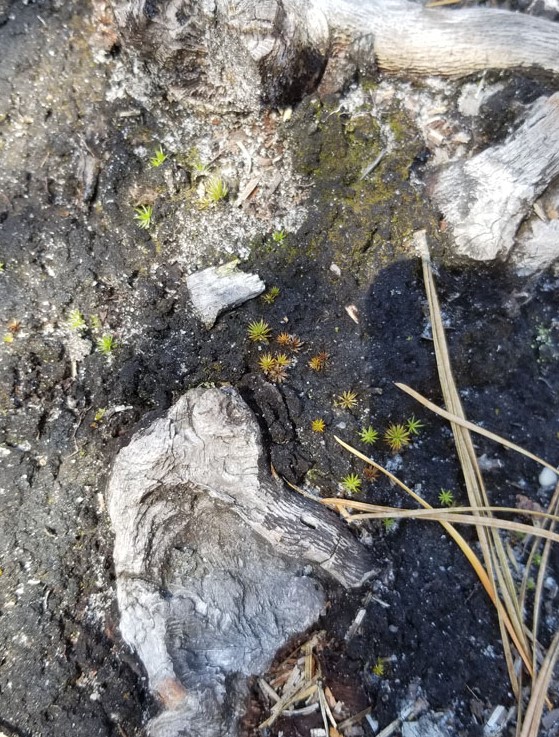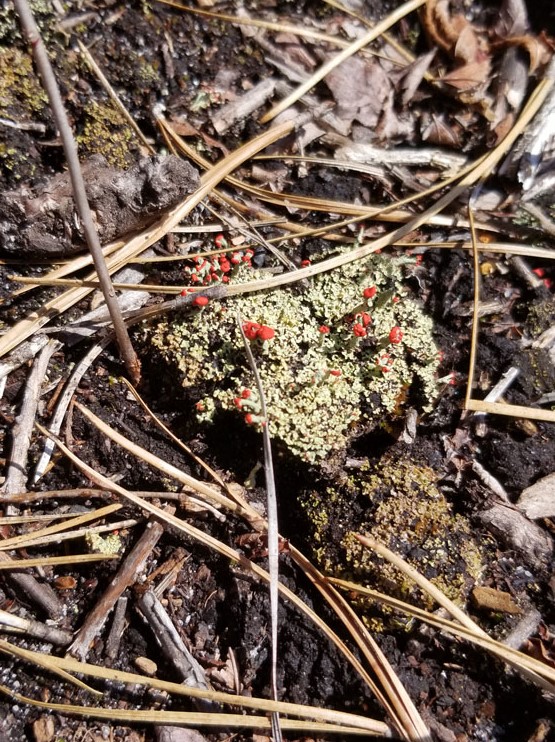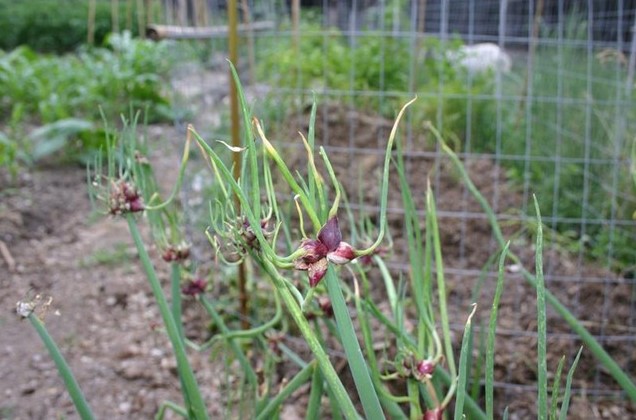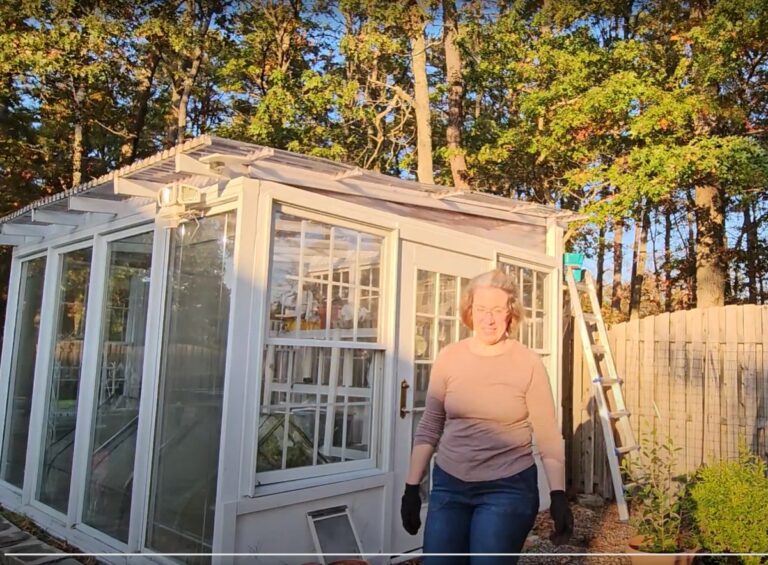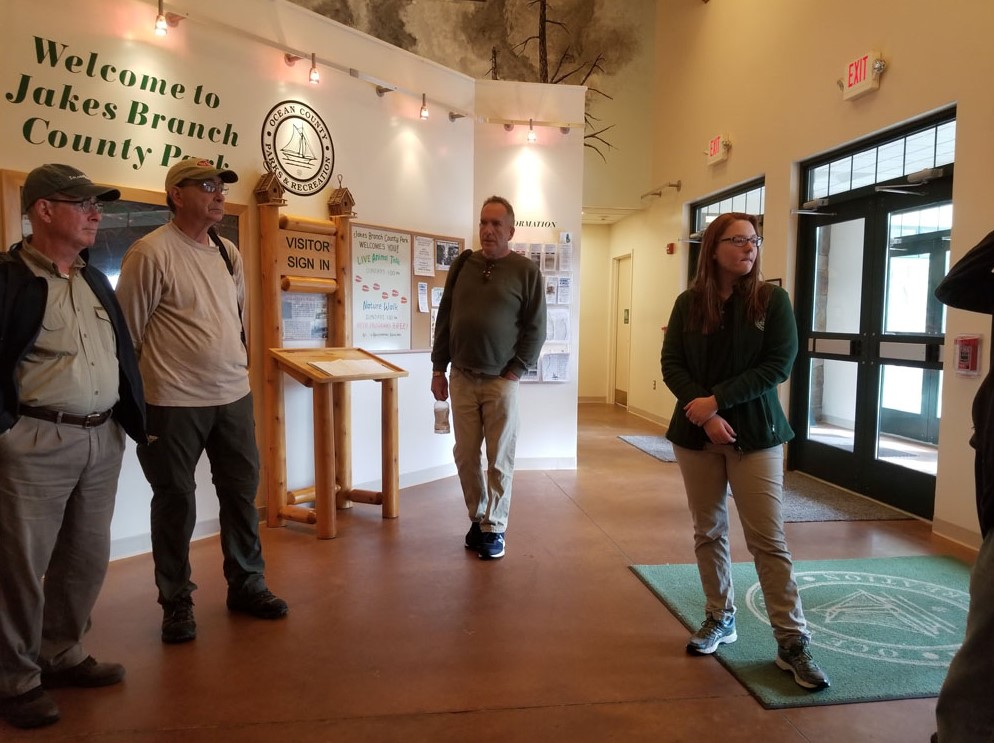
The morning began at Jake’s Branch County Park, a property I’m familiar with because when my kids were very small we lived in Beachwood and visited the nature center and the playground many times. Kate, a naturalist who works at Jake’s Branch, gave us a tour of the nature center. We discussed the taxidermy displays and talked about the decomposers in the pine barrens ecosystem, including vultures, insects, fungi and more.
living animals on display
The naturalist students also spent some time with the living animals they have on display there. The two aquatic turtles are kept separated because one is an invasive, non native species – the red eared slider turtle.
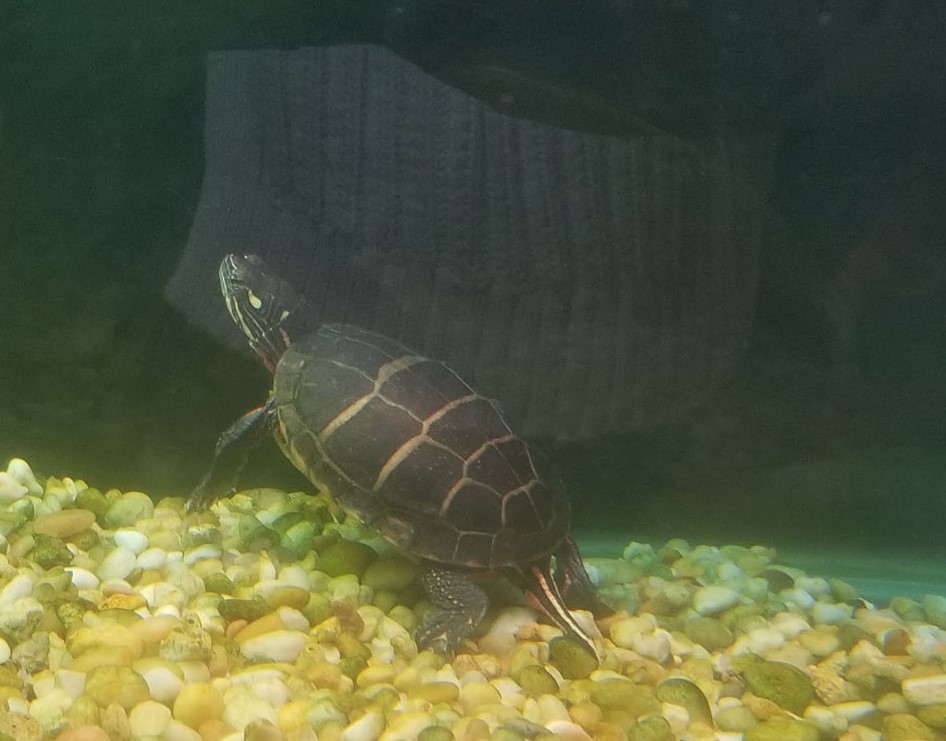
These turtle bullies used to be sold as pets when they were itty bitty turtles the size of a quarter. They grow to be quite large, depending on the size of the tank you keep them in. They are messy pets and need to be cleaned frequently. They also live a very long time, 30 to 100 years, so owning a turtle is a long term commitment. Sadly, many people who bought those cute little turtles have released them into the wild and the species does very well here. They grow larger than our native painted turtles and compete for the same food and habitat.
Please keep in mind that it is not legal to harvest any wildlife from a state or county park and keep it as a pet. If you want to help a turtle to cross the road so it doesn’t get hurt by vehicle traffic, please deliver it to the other side in the direction that it was already heading. Turtles have a great sense of direction and territory… they will only travel within a fairly small radius for their whole lives. If you put a turtle somewhere it doesn’t want to be, it will turn around as soon as you’ve gone and continue the way it was going before.
We also saw a resident corn snake and pine snake, both are large, native snakes to the New Jersey pine barrens. Corn snakes shed their skin approximately 1 time per month, pine snakes shed once every 3 months.
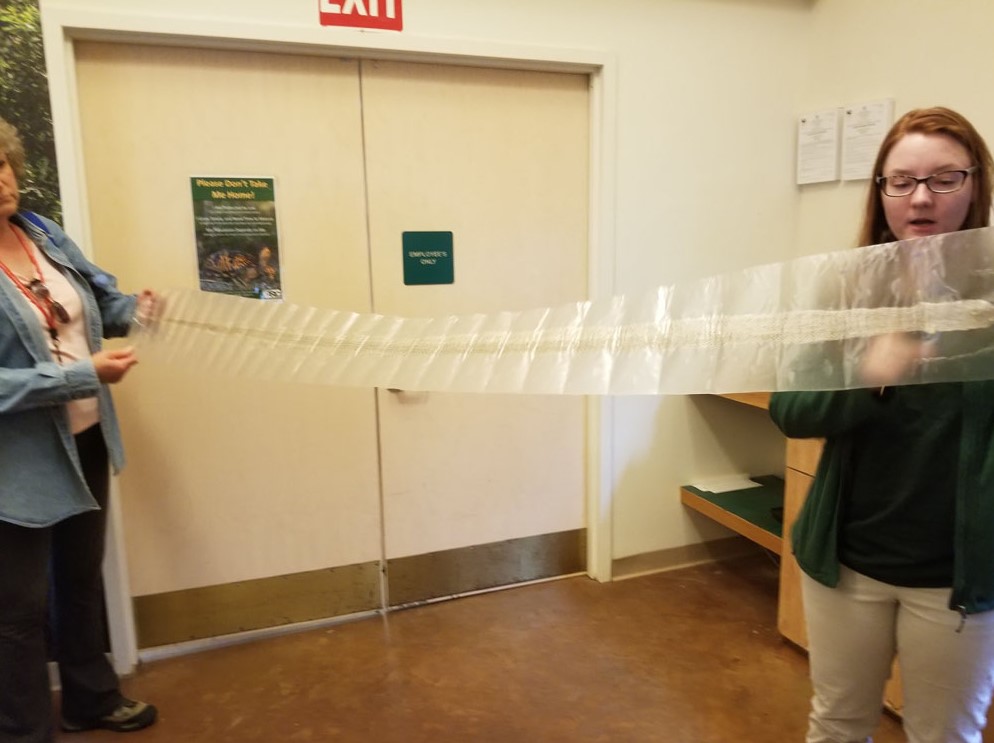
Corn snakes are popular pets and through selective breeding practices have developed 22 different color variations. The pine snake is state endangered and native to south Jersey specifically. The property that is now Jake’s Branch park was slated to be developed into a golf course. During the ecological wildlife assessment, both the pine snake and the pine barrens tree frog were found living on-site and the land was turned into a park instead.
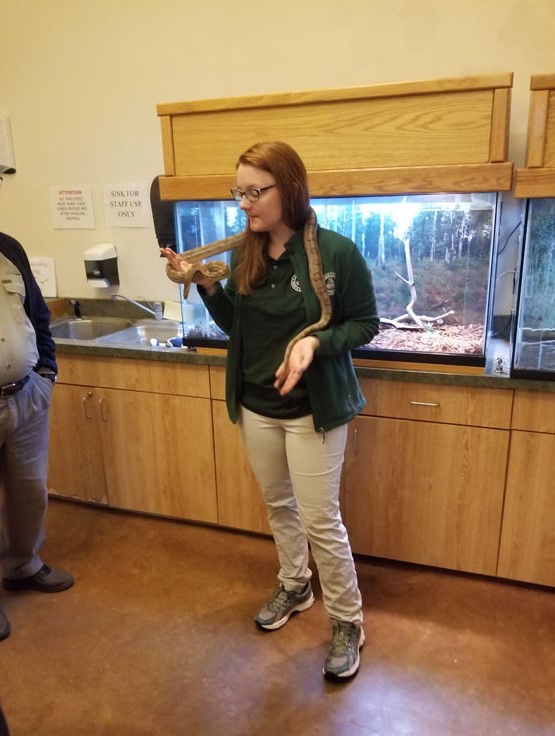
Kate told us the difference between a “poisonous snake” and a “venomous snake”. New Jersey is home to 2 varieties of venomous snakes but there are no poisonous snakes because you can eat any snake you want without getting sick… it’s only poisonous, if it’s toxic for you to digest.
Fire in the Pine Barrens
We continued to the 2nd level of the nature center which directs guests outside onto a balcony for a 360* view of the area. We spoke about fire ecology and the controlled burns that are performed to maintain the health and safety of the pine barrens.
Leaf litter and brush are burned in a controlled manner during early spring to help reseed the pines in the forest and discourage succession of oak trees who would eventually crowd out the pitch pines that are essential to the existing ecosystem. Fires have always occurred in the pine barrens… previously they were caused by lightening strikes. Later, native Americans would purposely set them to drive deer through the forest.
Some other things I learned during the group discussion were that the pine barrens were named as such because early settlers were frustrated that our soil was lousy at growing agricultural crops. Also, the Kirkwood Cohancey aquifer covers approximately 3000 square miles and is the biggest fresh water aquafer in the USA and maybe the world
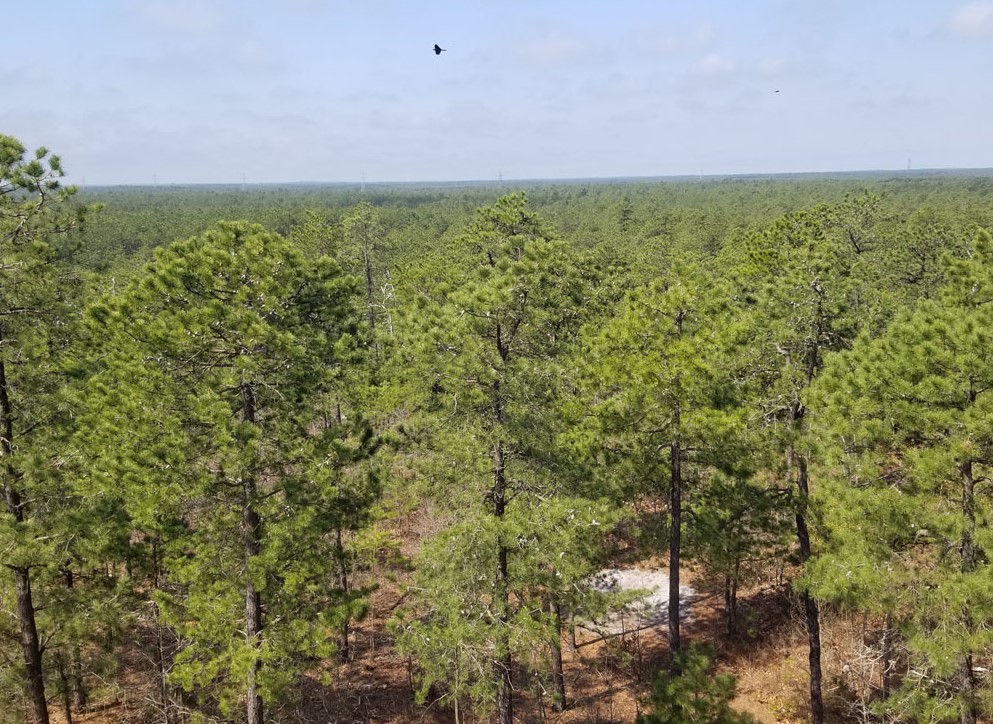
From our high vantage point at the top of the nature center we were able to observe the Forked River Mountains. The taller mountain is 184′ above sea level and elevation is very important to ecology. Even in a fairly flat area like the pine barrens, just a small elevation will create different growing conditions resulting in the encouragement of different plant species and wildlife that chooses to eat or shelter there.
The group left the nature center to tour the Interpretive trail and see some of the native species up close. We observed the result of a small, controlled burn nearby. On the trail, we saw a “witches’ broom” which is a virus that causes a malignant growth on a pine tree. It’s a similar concept to a gall on an oak where the virus causes the tree to produce matter to try to heal and protect itself from the invading pathogen. This action creates a matted section of material on the tree that will eventually lead to the plant’s demise.
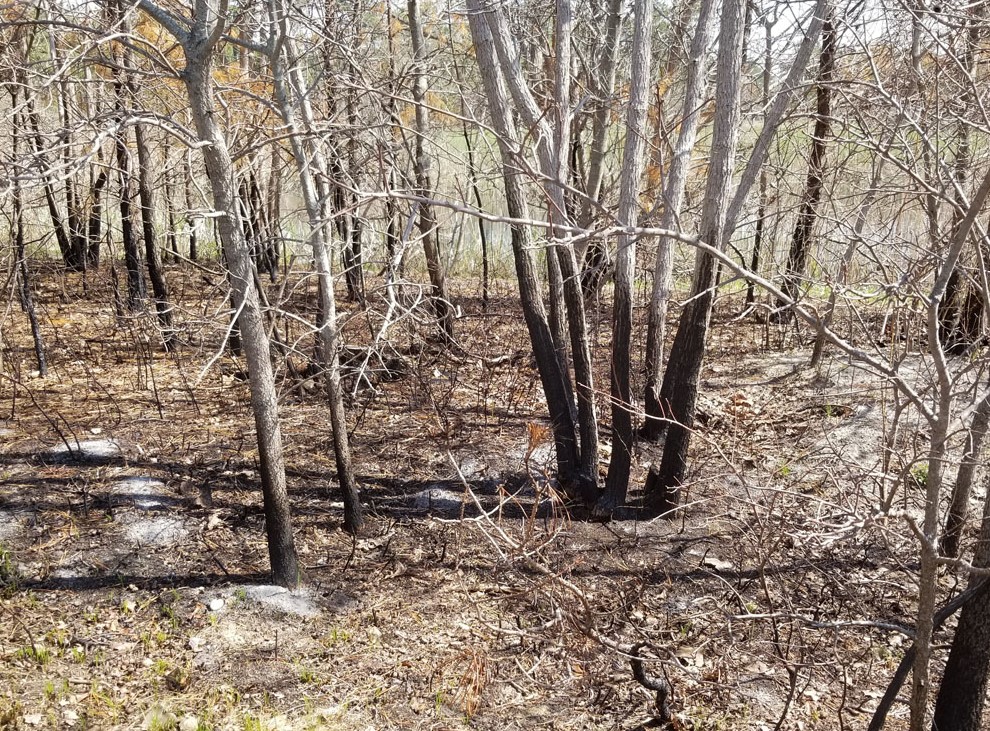
controlled burn
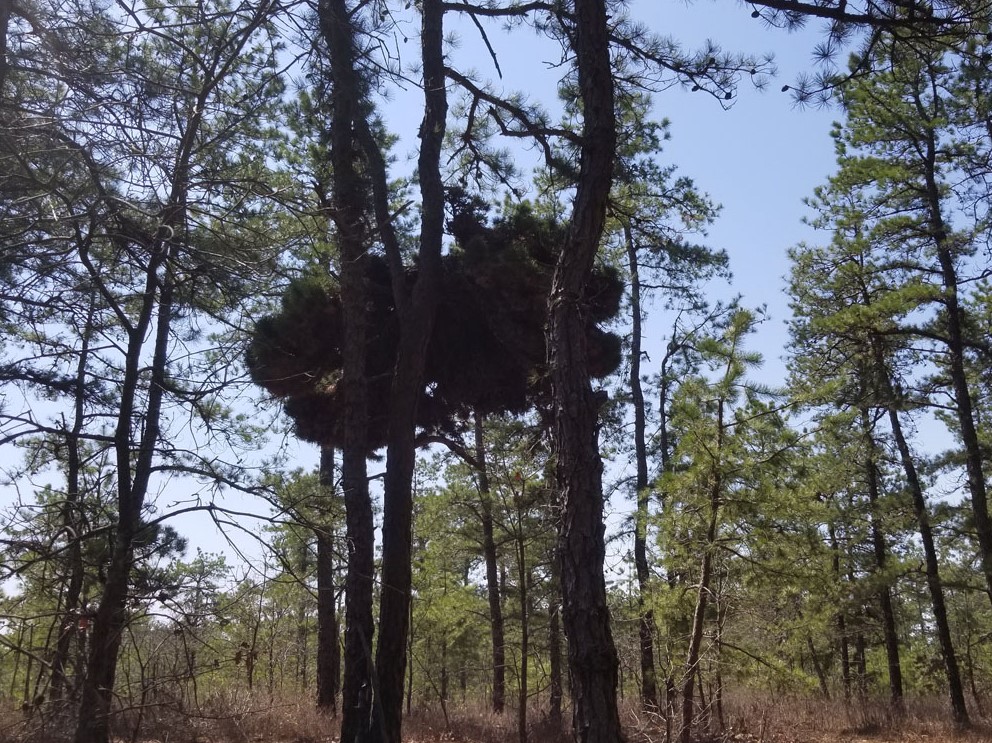
witches broom

We saw cinnamon fern fiddleheads and talked about how you should be very sure of plant id before assuming that any wild plant is edible. There are bracken ferns that also grow in the same area, but can cause cancer in people if you eat them. Be careful!
Some of the other species we saw on the trail at Jake’s branch are pictured below:
